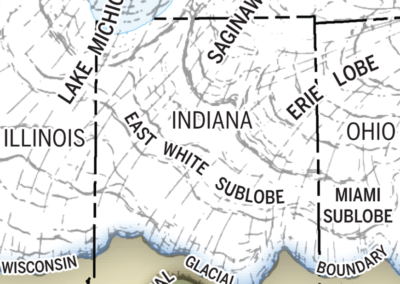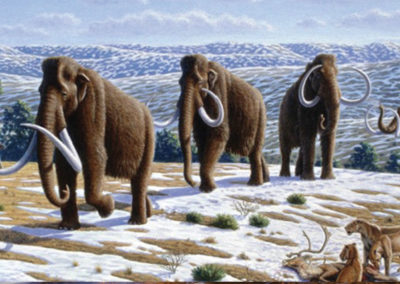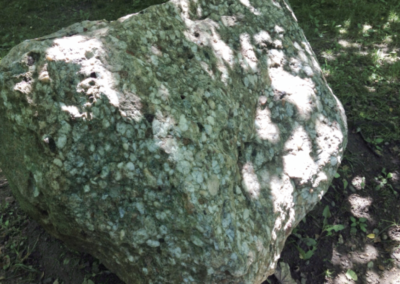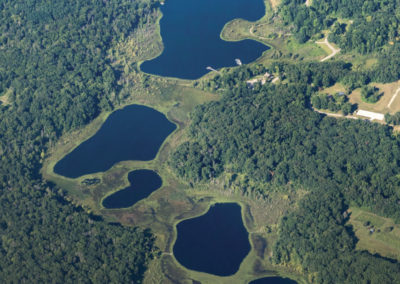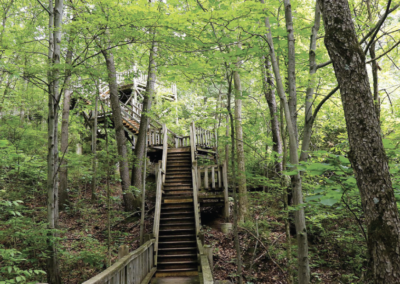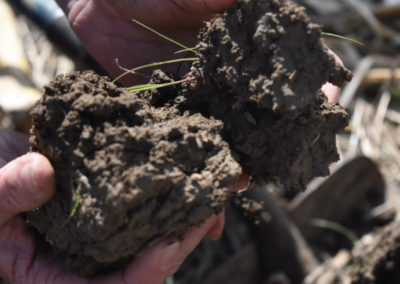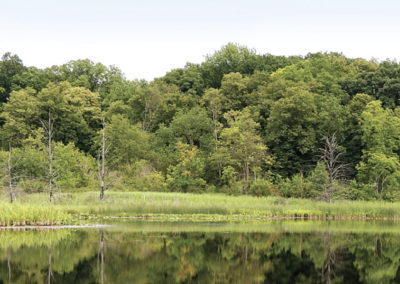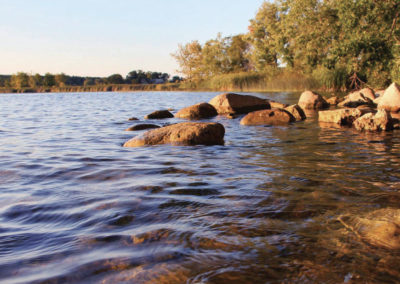About Steuben County Waterways
During an age when the climate was approximately 10° cooler than at present, more snow fell in the winter than melted in the summer. As an accumulation piled up over thousands of years, it formed an ice sheet many thousands of feet thick that flowed from Canada over northern Indiana. It separated into lobes with ice tongues forming along the axes of Lake Michigan, Lake Superior, and Lake Erie.
Forming the Landscape of Steuben County
The Ice Age
The distinctive landscape of northern Indiana is a legacy of a continental glacier from the Wisconsin age.
The irregularly shaped hills, bogs, and lakes are underlain by an assortment of materials that melted from a rugged disintegrating ice sheet about 14,000 years ago.
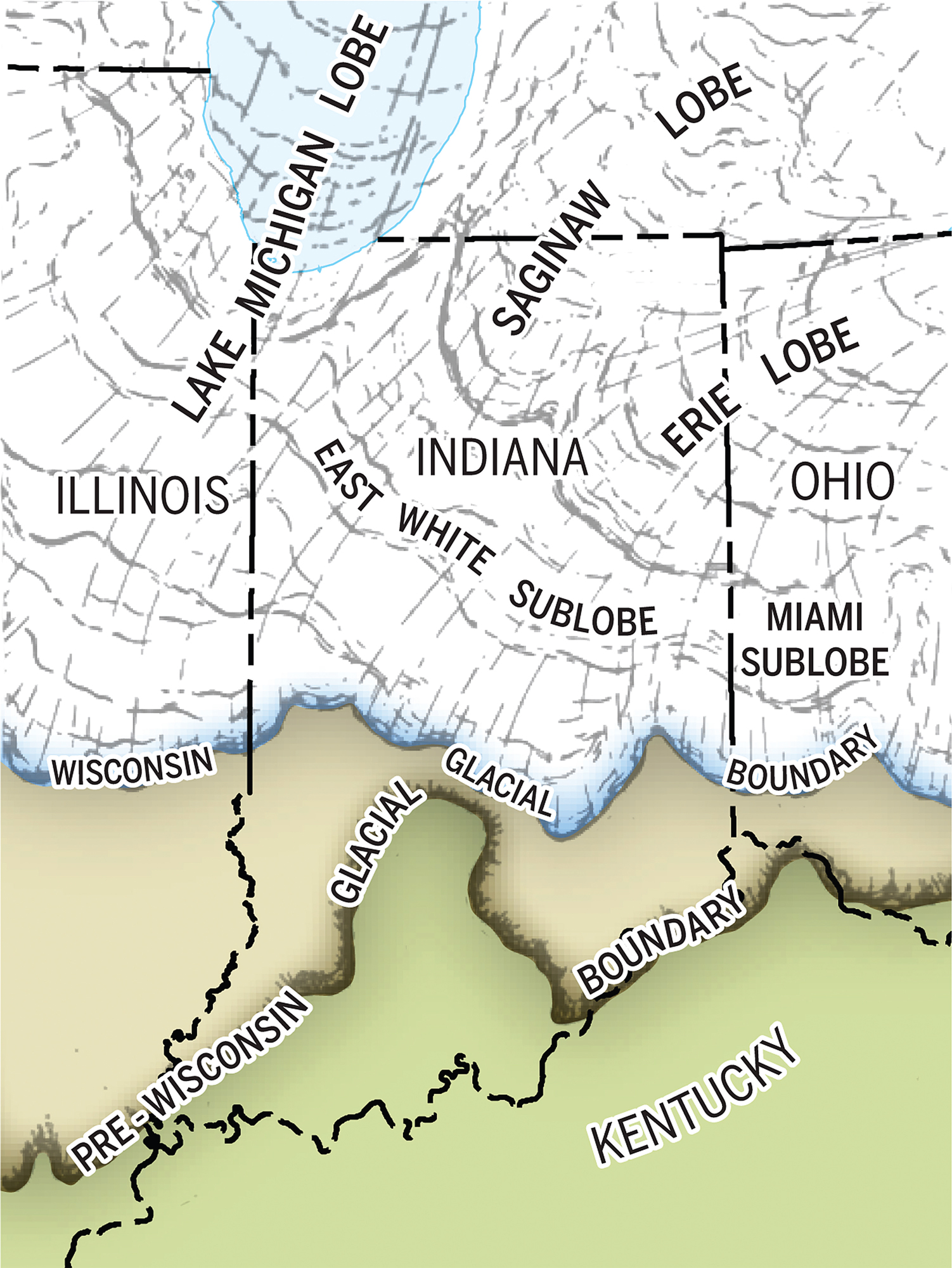
The distinctive northen Indiana landscape is a result of an ice age glacier like this one
Photo courtesy of Hugo Heimendinger
The Ice Age
During an age when the climate was approximately 10° cooler than at present, more snow fell in the winter than melted in the summer. As an accumulation piled up over thousands of years, it formed an ice sheet many thousands of feet thick that flowed from Canada over northern Indiana. It separated into lobes with ice tongues forming along the axes of Lake Michigan, Lake Superior, and Lake Erie.
That glacier was the last one of four of four to cover Indiana and has been named the “Wisconsin.” The Saginaw lobe of this massive, one-mile thick, ice flow was the last to leave a lasting impression on Steuben County. The Wisconsin glacier began melting 10,000 to 15,000 years ago.
The Moraine
The steeply rolling hills, bogs, and lakes at Pokagon State Park bear witness to the massive ice sheets that advanced and melted in Steuben County.
Photo courtesy of Jerry Byard.
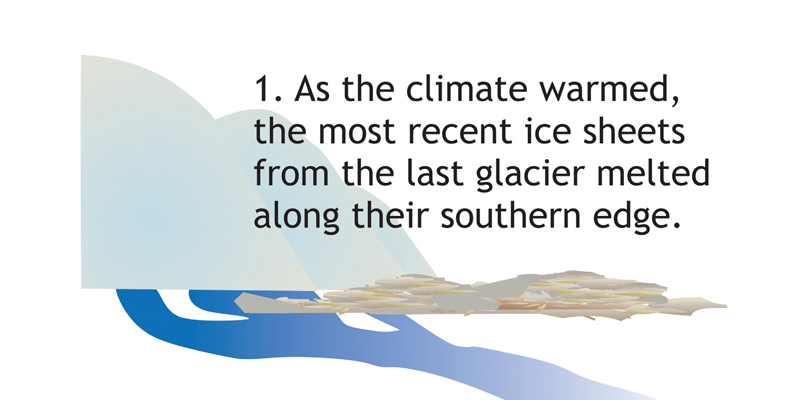
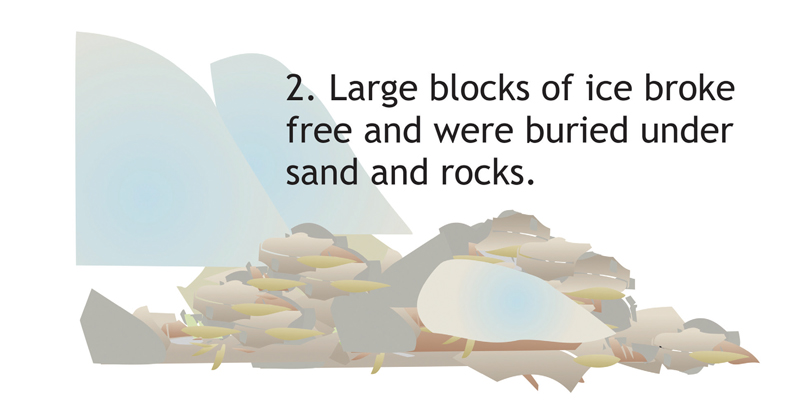
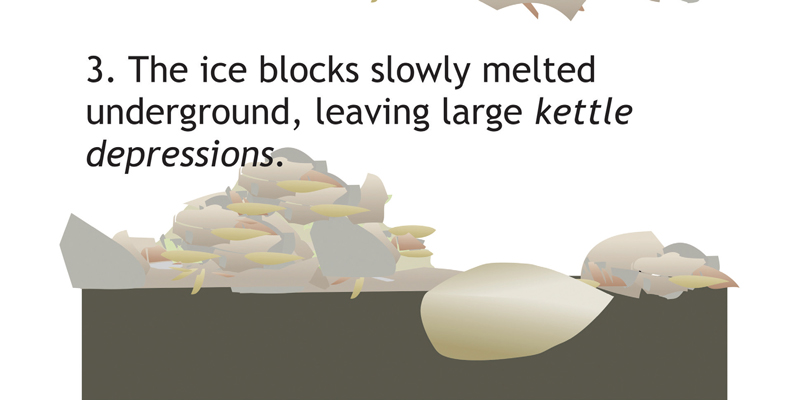
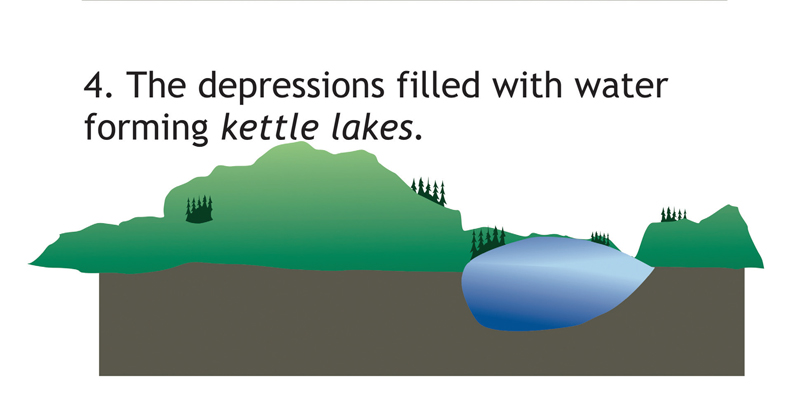
As the glaciers melted they deposited rock, dirt and sand picked up while traveling across the landscape from Canada. Where the glaciers melted relatively rapidly, glacial till ridges, called moraines, were left. These landforms are made up of debris and sediment ranging in size from rock dust to boulders.
Some sediment carried in the glacier melted from the base. Other sediments were carried by meltwater across the ice surface and into great crevasses, or cracks; these sediments were left in long gravel ridges called eskers, crevasse fills, and irregular sharp-crested hills, known as kames.
Some unsorted sediments slid and flowed down the rugged ice surface as it melted, accumulating in the natural melt hollows on the ice surface. This material later formed hills as the surrounding and underlying ice melted away. Where sunken blocks of ice broke away as the glaciers melted, ice block depressions or kettle holes formed. Some of these holes filled with water and are known as kettle lakes.
Examples of kettle lakes include Lake Lonidaw in Pokagon State Park and Lake James.
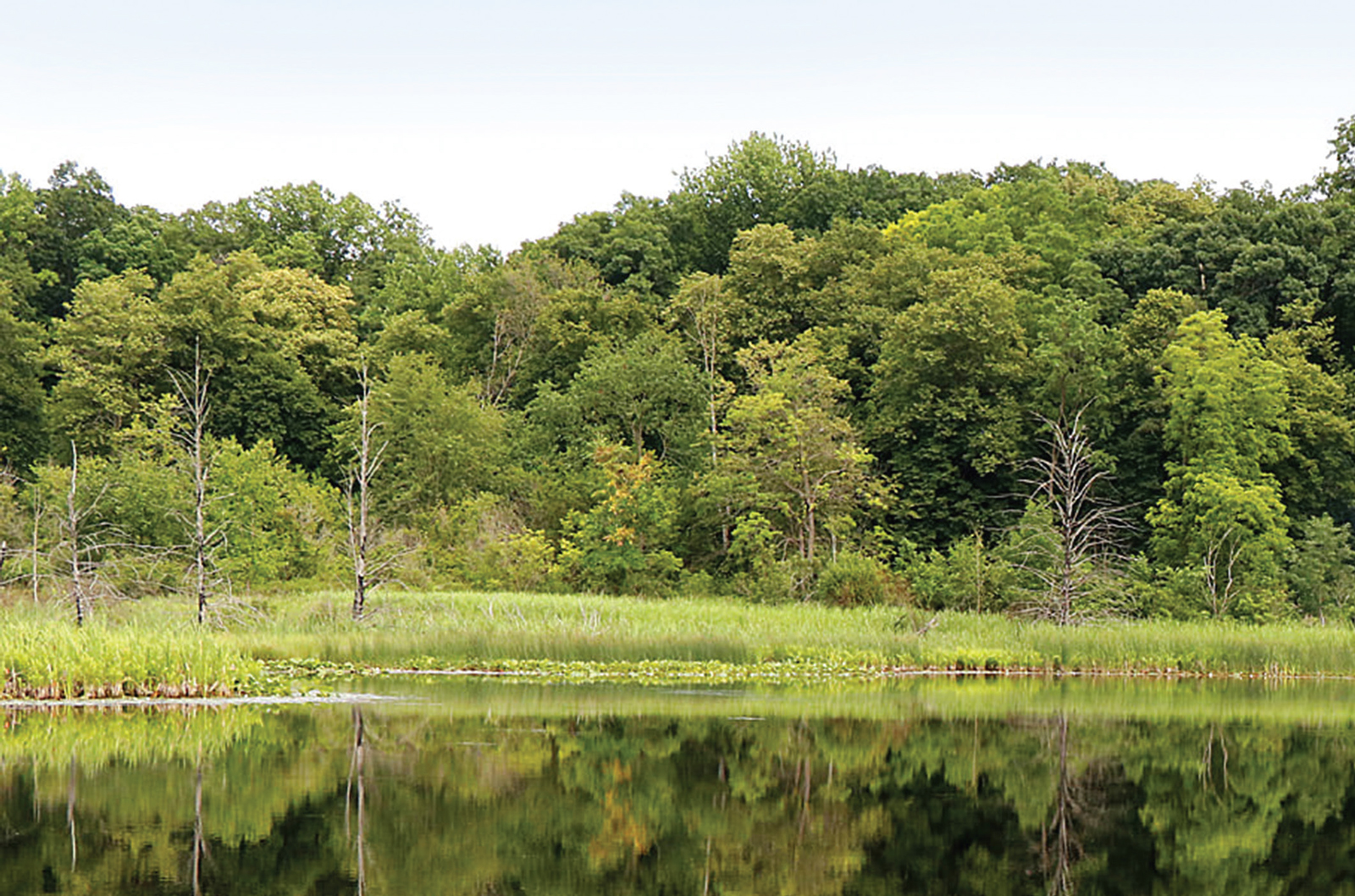
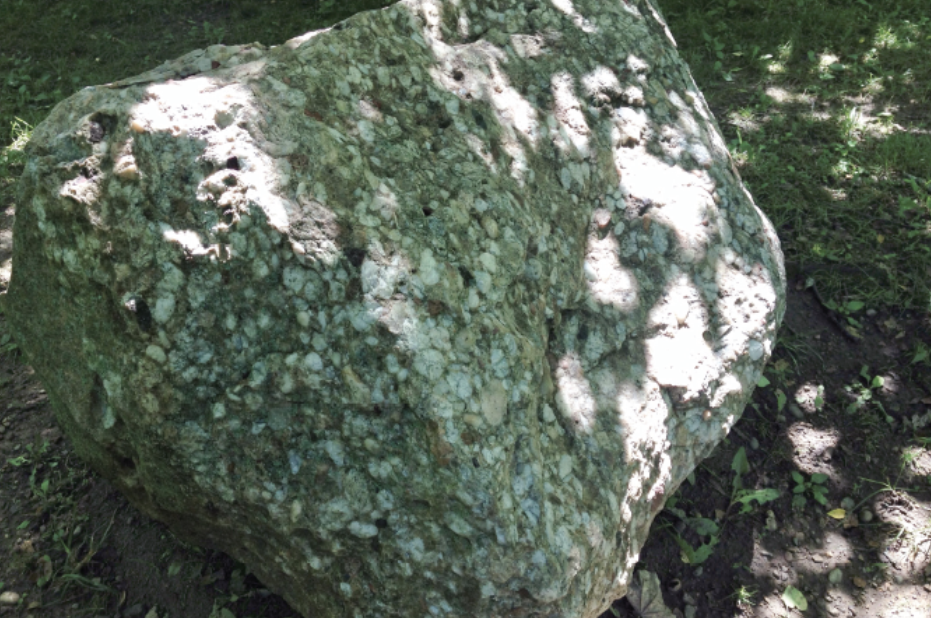
Left Behind
As the glacial ice melted and receded from northern Indiana, it left behind sediment called till. Carried
within or on the surface of the glacier, till is composed of unsorted sand, silt, and clay. Water transported and deposited outwash of sorted and stratified sand and gravel as the glacier thawed. Throughout the county you can find piles of rocks, and individual rocks, that seemingly came from nowhere. These are knows as glacial erratics. They are part of the total mass of earth brought down from the north.
Many rocks and boulders, known as “glacial erratics” can be found throughout the county. These former Canadian residents arrived in one of the glacial advances into central Indiana.
Photo courtesy of Jerry Byard.
Our Ice Age Legacy
The ice masses took centuries to melt.
Even as they wasted away, plant communities colonized and migrated northward over the debris. Pollen found in lake and bog deposits in northern Indiana record the postglacial succession from spruce to pine and, finally, to oak forest, indicating the general warming
of the climate.
Some bogs in northern Indiana also have yielded the remains of an extinct mastodon, wooly mammoth, and giant beaver.
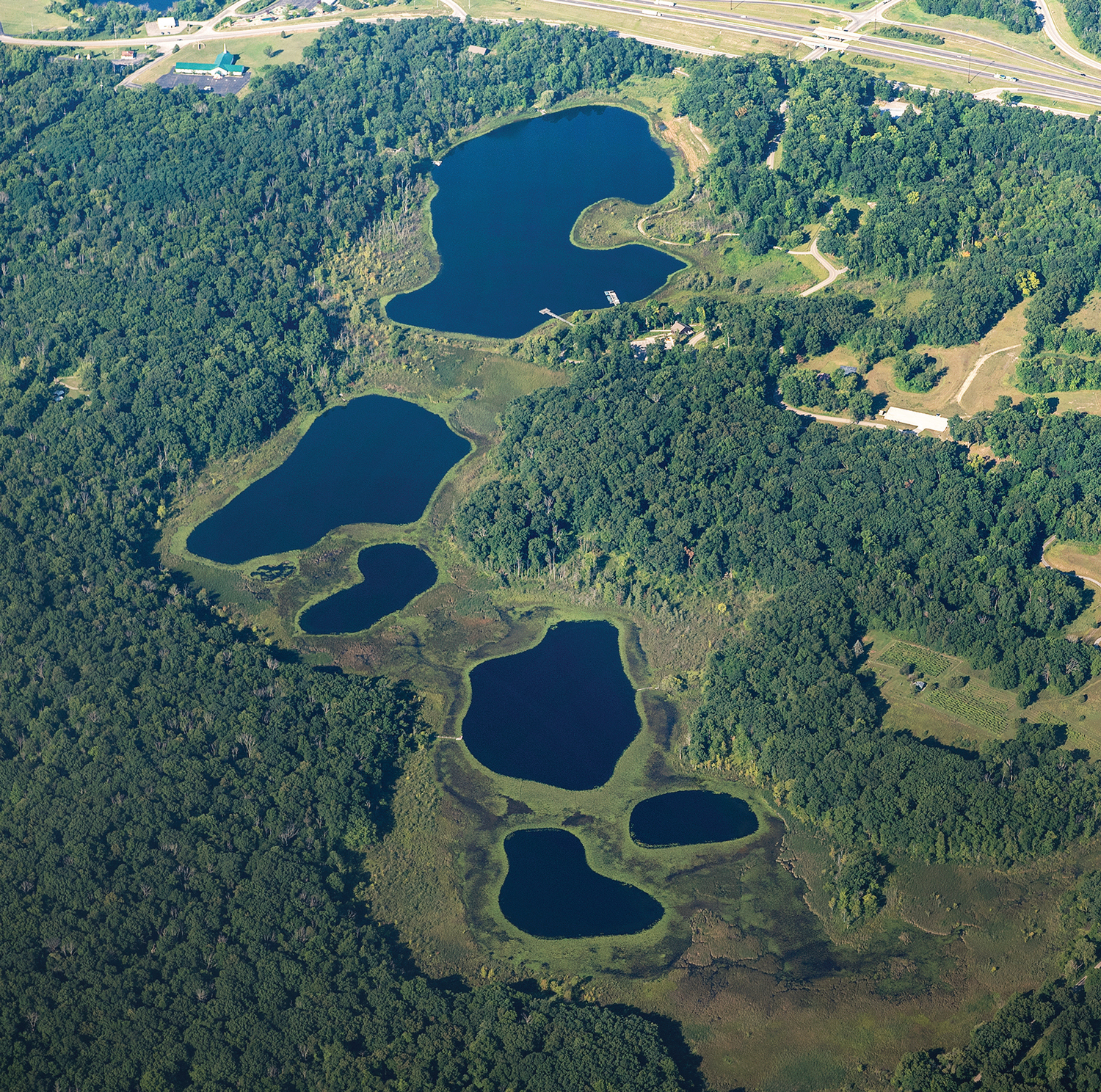
Steuben County Waterways
The Ice Age
The distinctive landscape of northern Indiana is a legacy of a continental glacier from the Wisconsin age.
The irregularly shaped hills, bogs, and lakes are underlain by an assortment of materials that melted from a rugged disintegrating ice sheet about 14,000 years ago.
